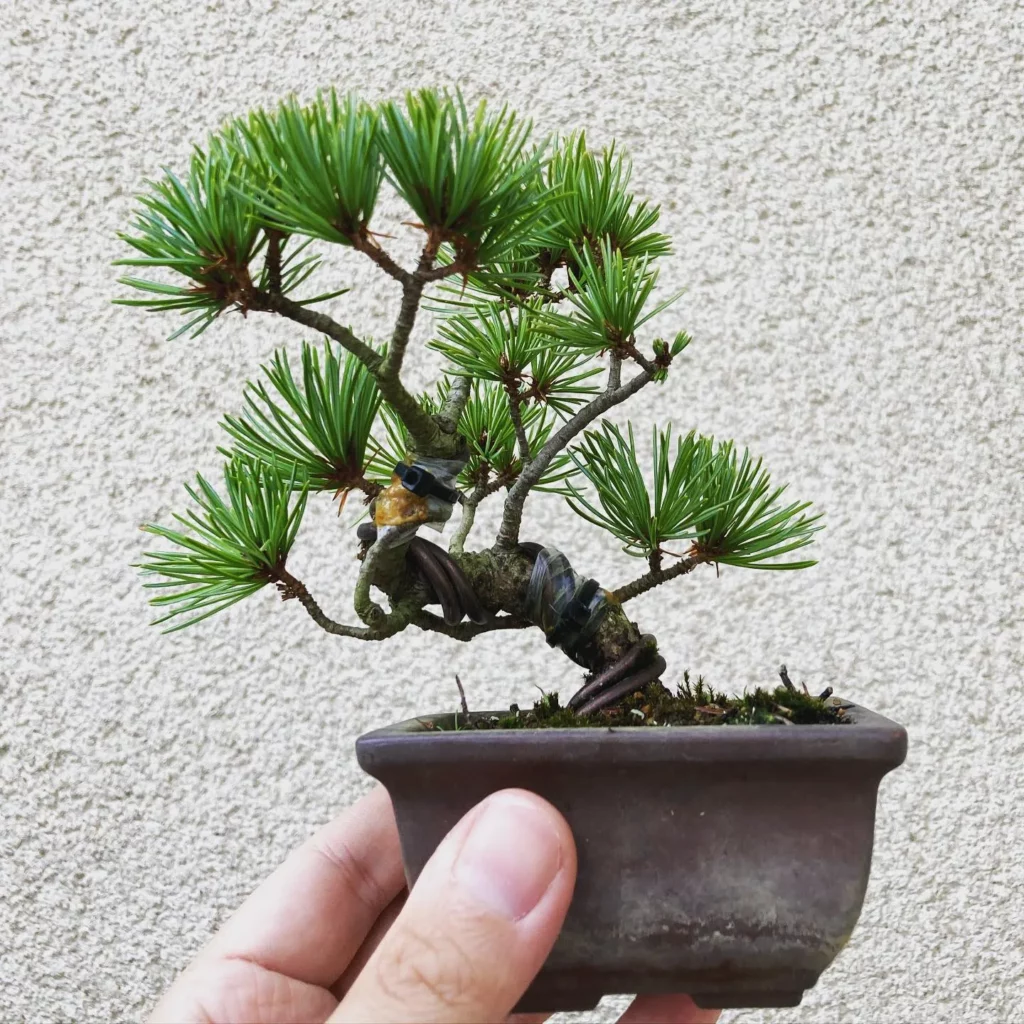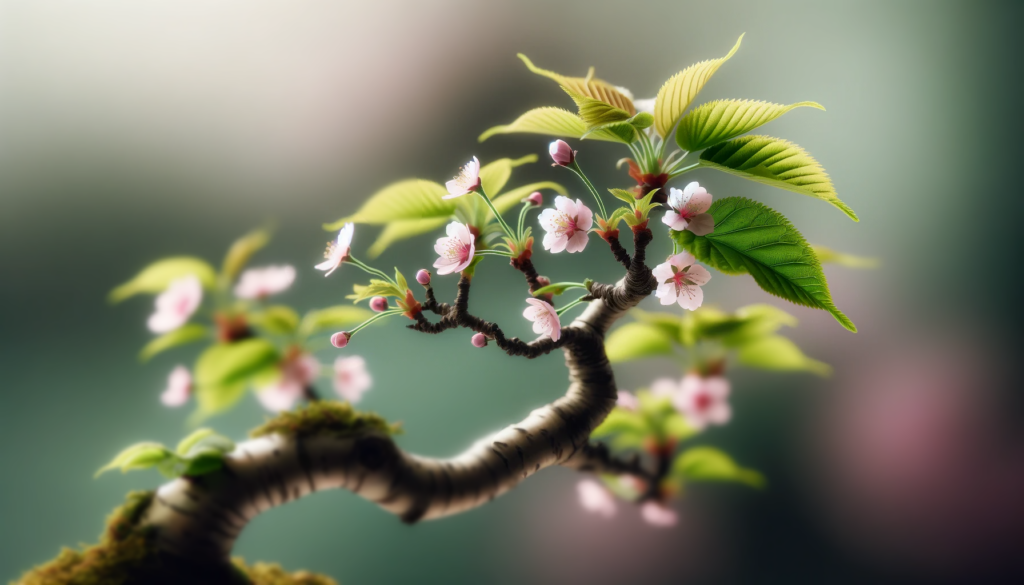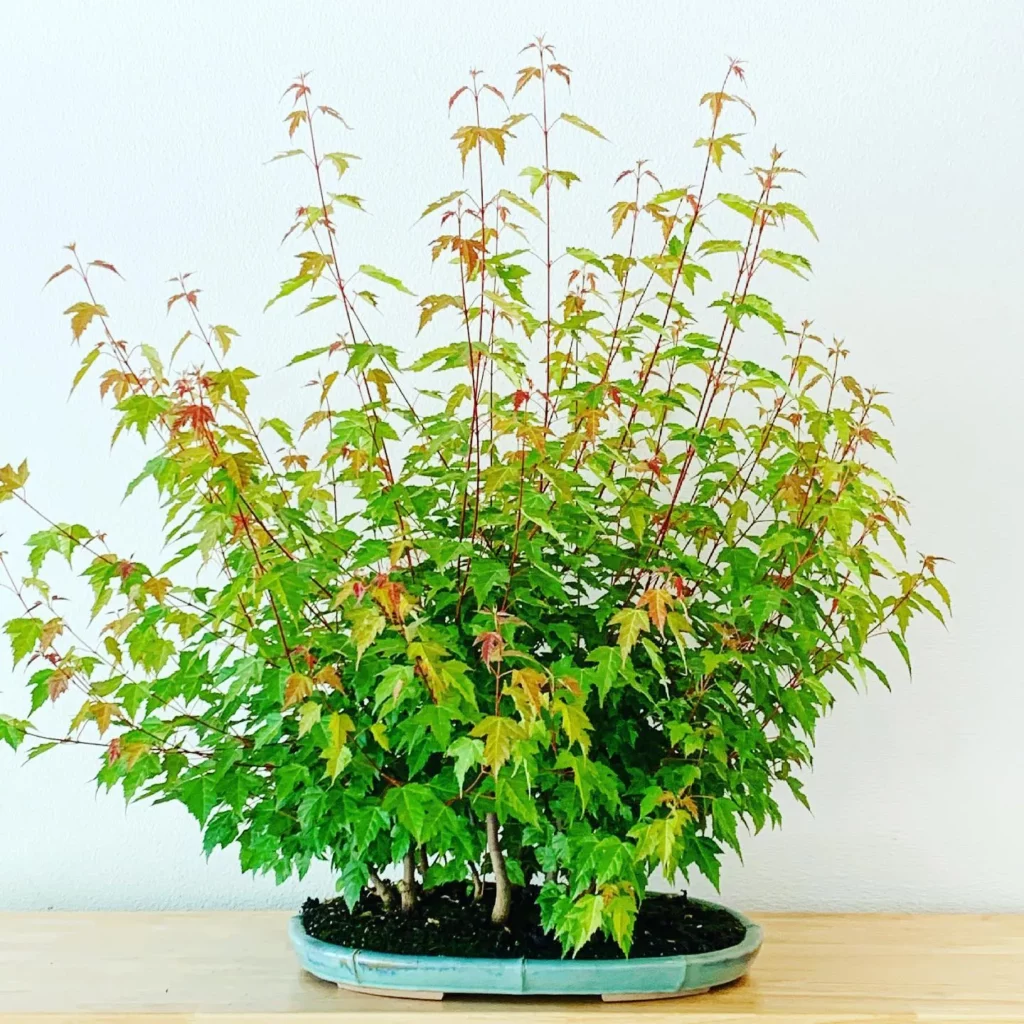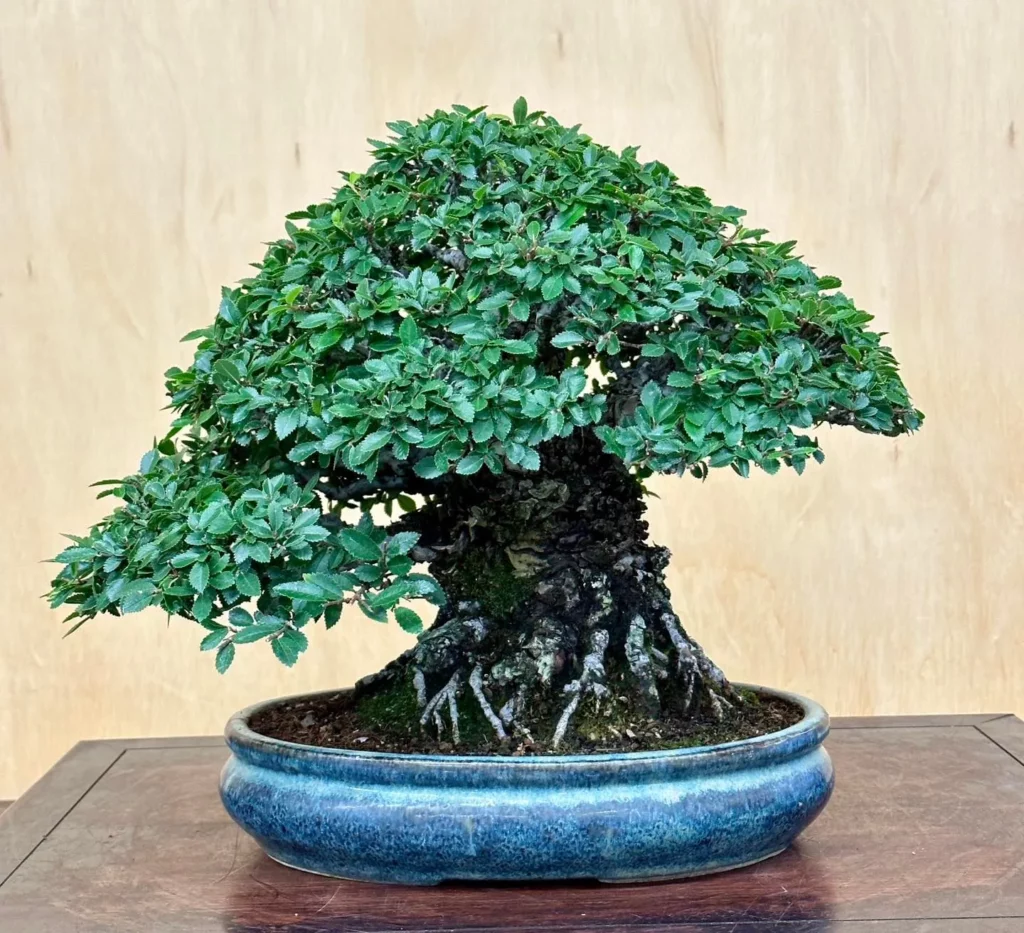Welcome to our guide on growing and maintaining pine bonsai! Whether you’re a beginner or an experienced bonsai enthusiast, this article will provide you with the secrets to successfully cultivate a stunning and elegant pine bonsai. From selecting the right pine tree species to shaping and caring for your bonsai, we will cover all the essential steps and techniques to ensure your growing success.
Key Takeaways:
- Pine bonsai, also known as Pinus spp., is a beautiful addition to any home or garden.
- Choosing the right pine tree species is crucial for bonsai cultivation.
- Pine bonsai requires full sunlight, moderate watering, and well-draining soil.
- Be aware of common pests and diseases that can affect the health of your pine bonsai.
Characteristics of Pine Bonsai



When it comes to pine bonsai, it is important to understand its unique characteristics. Pine bonsai, scientifically known as Pinus spp., is a slow-growing tree that requires specific conditions for optimal growth. Here are some key characteristics to keep in mind:
- Pine bonsai requires full sun to thrive. It is important to place your bonsai in a location with adequate sunlight exposure.
- Moderate watering is essential for pine bonsai. Be mindful not to overwater, as pine bonsai prefers well-draining soil.
- Pine bonsai is a low-fertilizer plant. Using too much fertilizer can harm the tree, so it’s important to use a balanced and controlled approach to fertilization.
- Pruning is necessary to shape and maintain the bonsai’s desired form. Regular pruning helps control growth and create an aesthetically pleasing bonsai.
Selecting the Right Pine Tree for Bonsai Cultivation



When it comes to cultivating a pine bonsai, selecting the right pine tree species is crucial. The Japanese Black Pine (Pinus thunbergii) and the Scots Pine (Pinus sylvestris) are popular choices for bonsai cultivation. These species have small needles and develop gnarled and textured trunks, which are desirable attributes for bonsai trees. Another excellent choice is the Korean Pine (Pinus koraiensis), known for its small and symmetrical pine cones. This species is perfect for creating a realistic pine cone bonsai.
When selecting a pine tree for bonsai cultivation, consider its adaptability to bonsai techniques and its ability to produce pine cones. Look for species with small needles and unique trunk characteristics that can be shaped and trained to achieve the desired form. It’s also important to research the specific care requirements of each pine tree species to ensure you can provide the necessary conditions for its growth and development.
Selecting the Right Pine Tree Species
- Japanese Black Pine (Pinus thunbergii)
- Scots Pine (Pinus sylvestris)
- Korean Pine (Pinus koraiensis)
Planting a Pine Cone to Start Growing a Bonsai



If you’re interested in growing a bonsai tree from scratch, starting with a pine cone can be an exciting and rewarding venture. Planting a pine cone is a simple and effective way to begin your journey into bonsai cultivation. Follow these steps to get started:
- Collect a mature pine cone that has already released its seeds.
- Extract the seeds from the pine cone.
- Prepare a well-draining bonsai soil mix by combining inorganic components like perlite, pumice, or coarse sand with organic materials such as pine bark, peat moss, or coconut coir.
- Plant the pine seeds on the surface of the soil and water them gently.
- Place the bonsai pot in a location with indirect sunlight and maintain a consistent temperature.
- Keep the soil slightly moist, but avoid overwatering.
- As the seedlings sprout, thin them out to allow for better growth.
Optimal Soil Mix for Pine Bonsai



In order to ensure the optimal growth and development of your pine bonsai, it is crucial to use the right soil mix. The soil mix plays a significant role in providing the necessary drainage and nutrients that the bonsai tree needs to thrive.
An ideal soil mix for pine bonsai should have a balance between water retention and drainage. You can achieve this by incorporating both inorganic and organic components. Inorganic components like perlite, pumice, or coarse sand help to improve drainage and prevent waterlogging, while organic materials like pine bark, peat moss, or coconut coir retain moisture and provide essential nutrients.
Here is a recommended soil mix for your pine bonsai:
Ingredients:
- 50% inorganic component (perlite, pumice, or coarse sand)
- 50% organic component (pine bark, peat moss, or coconut coir)
Instructions:
- Combine the inorganic and organic components in equal parts to achieve a balanced soil mix.
- Thoroughly mix the components together until they are well blended.
- Fill your bonsai pot with the soil mix, leaving enough space for the roots of the pine bonsai.
- Gently place your pine bonsai into the pot, ensuring that the roots are spread out evenly.
- Press the soil mix around the roots to secure the bonsai in place.
- Water your pine bonsai thoroughly after planting, allowing the water to drain out from the drainage holes.
Caring for Your Pine Bonsai: Essential Maintenance Tips


Once you’ve chosen and planted your pine bonsai, it’s important to provide the necessary care to ensure its health and vitality. With proper maintenance, you can enjoy the beauty of your pine bonsai for years to come. Here are some essential tips for caring for your pine bonsai:
- Watering: Pine bonsai requires regular watering to keep the soil evenly moist. However, be careful not to overwater, as this can lead to root rot. Check the moisture level of the soil regularly and adjust your watering schedule accordingly.
- Sunlight: Your pine bonsai thrives in full sun, so make sure to place it in a location that receives adequate sunlight throughout the day. If you’re keeping your bonsai indoors, consider using artificial grow lights to provide the necessary light.
- Temperature and Frost Protection: Pine bonsai is susceptible to extreme temperatures and frost. During winter, protect your bonsai by insulating it or moving it to a sheltered location to prevent damage from cold weather.
- Pruning and Shaping: Regular pruning is essential for maintaining the shape and form of your pine bonsai. Remove any dead or excessive growth to promote healthy development and ensure a balanced appearance.
- Pest and Disease Control: Monitor your pine bonsai for any signs of pests or diseases, such as aphids or scale insects. Take prompt action to control and prevent infestations by using appropriate treatments or seeking professional advice.
Propagation Methods for Pine Bonsai
Growing your own pine bonsai can be a rewarding and fulfilling experience. To start your bonsai journey, you have two main methods of propagation to choose from: seeds and cuttings. Each method has its own advantages and challenges, so let’s explore them further.
Propagation from Seeds
- Collect mature pine cones that have already released their seeds.
- Extract the seeds carefully and ensure they are viable and healthy.
- Prepare a well-draining soil mix suitable for bonsai cultivation.
- Plant the seeds on the surface of the soil and water gently.
- Provide the bonsai pot with indirect sunlight and a consistent temperature.
- Be patient, as germination can take several weeks to months.
Propagation from Cuttings
- Select a healthy branch from an established pine bonsai.
- Take a cutting, ensuring it has a sufficient number of buds.
- Prepare a growth medium suitable for rooting, such as perlite or vermiculite.
- Plant the cutting in the growth medium and provide adequate moisture.
- Place the cutting in a location with indirect sunlight and maintain a consistent temperature.
- Monitor the cutting for root development, which can take several weeks.
Pruning Techniques for Shaping Pine Bonsai
Pruning is an essential technique for shaping and maintaining the desired form of your pine bonsai. Here are some effective pruning techniques to help you sculpt your bonsai tree:
1. Pinching:
- Gently pinch the new growth with your fingers to encourage branching and density. This helps create a fuller and more compact appearance.
- Pinch back the candles (new shoots) of the pine tree in early spring to control the length and promote lateral bud development.
2. Thinning:
- Remove overcrowded branches to improve airflow and prevent the development of weak or crossing branches.
- Thin out the foliage by selectively removing needles to achieve a more balanced and visually appealing bonsai.
3. Wiring:
- Wiring is a technique used to shape the branches of your pine bonsai. Carefully wrap copper or aluminum wire around the branches, gently bending them into the desired position.
- Use caution when wiring pine bonsai as their branches are more brittle compared to other tree species. Check the wire regularly to prevent it from cutting into the bark.
Growth and Development of Pine Bonsai
The growth and development of a pine bonsai are influenced by various factors, and understanding these factors is key to successfully cultivating a healthy and beautiful bonsai tree. Here are some important points to consider:
- Lighting: Pine bonsai requires full sun to thrive. Place your bonsai in a location that receives adequate sunlight throughout the day.
- Watering: Proper watering is crucial for the health of your pine bonsai. Keep the soil evenly moist, but avoid overwatering, as this can lead to root rot.
- Fertilizing: Pine bonsai is a low-fertilizer plant. Use a slow-release fertilizer or organic matter to provide the necessary nutrients. Avoid overfertilization, as it can cause excessive growth and weaken the bonsai.
- Pruning: Regular pruning is essential for shaping and maintaining the desired form of your pine bonsai. Remove any unnecessary branches or foliage to create a balanced and aesthetically pleasing tree.
- Monitoring: Regularly monitor your pine bonsai for any signs of pests or diseases. Inspect the foliage, branches, and trunk for any abnormalities and take prompt action to address these issues.
H3: Tending to the Growth of Your Pine Bonsai
Proper care and attention are essential for the healthy growth and development of your pine bonsai. Here are some tips to help you tend to the growth of your bonsai:
- Watering: Monitor the moisture levels of the soil and water your bonsai accordingly. Aim for even moisture without waterlogging the roots.
- Lighting: Place your bonsai in a location that receives ample sunlight. Pine bonsai thrives in full sun exposure.
- Fertilizing: Use a balanced fertilizer specially formulated for bonsai trees. Apply it as directed to provide the necessary nutrients for healthy growth.
- Pruning: Regularly prune your bonsai to maintain its shape and remove any dead or overgrown branches. Pruning encourages new growth and keeps your bonsai looking tidy.
- Protection: Shield your bonsai from extreme temperatures, strong winds, and frost. Move it indoors or provide insulation during harsh weather conditions.
Pests and Diseases of Pine Bonsai
Growing a pine bonsai requires careful attention to potential pests and diseases that can hinder the health and growth of your bonsai tree. By staying vigilant and taking preventative measures, you can protect your pine bonsai and ensure its longevity.
Common Pests
- Aphids: These tiny insects can cause damage to the foliage of your pine bonsai. Regularly inspect your tree for signs of aphid infestation, such as curled or discolored leaves.
- Scale Insects: Scale insects can appear as small, immobile bumps on the branches of your pine bonsai. They can weaken the tree by sucking sap from the branches.
- Rust: Rust is a fungal disease that can appear as orange or brown spots on the foliage of your pine bonsai. It is important to promptly address any signs of rust to prevent its spread.
Prevention and Control
To prevent and control pests and diseases, consider the following measures:
- Regularly inspect your pine bonsai for signs of pests or diseases.
- Keep your bonsai clean by removing fallen leaves and debris that may harbor pests or fungal spores.
- Prune and thin your bonsai to promote airflow and reduce the risk of fungal diseases.
- Use insecticidal soaps or horticultural oils to control pest infestations.
- If necessary, consult a professional bonsai expert or arborist for specific pest or disease issues.
Conclusion
Congratulations on taking the first step towards growing a successful pine bonsai! By following the secrets and techniques outlined in this guide, you are well-equipped to cultivate a stunning and elegant pine bonsai that will add beauty and tranquility to your home or garden.
Remember, selecting the right pine tree species is crucial for bonsai cultivation. Choose species such as Japanese Black Pine or Scots Pine that have small needles and develop textured trunks. Planting a pine cone or propagating from seeds or cuttings are excellent ways to start growing your bonsai from scratch.
Proper care and maintenance are essential for the growth and development of your pine bonsai. Regular watering, providing sufficient sunlight, and protecting it from extreme temperatures and frost are crucial. Additionally, use pruning techniques to shape and maintain the desired form of your bonsai, but be cautious not to prune or wire too aggressively.
With dedication and knowledge, your pine bonsai will flourish, and you will experience the joy of growing a beautiful and realistic miniature tree. Enjoy the artistry and tranquility of bonsai cultivation as you unlock your green thumb and embark on this rewarding journey of growing success.
FAQ
What are the optimal growing conditions for pine bonsai?
Pine bonsai requires full sun and moderate watering needs, with well-draining soil. It is important to protect it from extreme temperatures and frost.
How do I select the right pine tree for bonsai cultivation?
Consider the adaptability to bonsai techniques and the ability to produce pine cones. Popular choices include Japanese Black Pine, Scots Pine, and Korean Pine.
How do I grow a bonsai tree from a pine cone?
Collect a fully matured pine cone, extract the seeds, plant them in a well-draining soil mix, provide proper conditions for germination, and thin out the seedlings as they sprout.
What type of soil mix should I use for pine bonsai?
Use a well-draining soil mix that balances water retention and drainage. It should include inorganic components like perlite or coarse sand, as well as organic materials like pine bark or peat moss.
How do I care for a pine bonsai?
Regularly water the tree, provide sufficient sunlight, protect from extreme temperatures and frost, and prune and shape the tree to maintain its desired form.
How can I propagate pine bonsai?
Pine bonsai can be propagated from seeds or cuttings. Planting a pine cone or rooting a branch from an established bonsai are the main methods.
What pruning techniques should I use for shaping pine bonsai?
Regular pruning and techniques such as pinching, thinning, and wiring can be used to shape the branches and foliage. Be cautious not to prune or wire too aggressively.
How long does it take for pine bonsai to grow and develop?
Pine bonsai exhibits slow growth and it may take several years to achieve the desired form. Regular care and attention are essential for its health and development.
What pests and diseases should I watch out for with pine bonsai?
Pine bonsai can be affected by pests such as aphids, scale insects, and rust. Regular inspection and proper measures, such as using insecticidal soaps or oils, can help control and prevent these issues.




